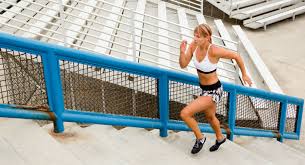Every athlete from weekend warriors to elite professionals eventually hits a plateau. It’s that frustrating phase when progress stalls, performance stagnates, and no matter how hard you train, the results don’t seem to follow. Plateaus are normal, but they’re not permanent. Breaking through them isn’t just about training harder it’s about training smarter.
Here are some lesser-known yet powerful strategies to help athletes push past plateaus and reignite progress.
1. Shift the Focus from Output to Input
Athletes often measure progress by results faster times, heavier lifts, or better stats. But progress slows when the body adapts to the same stimulus. Instead of chasing bigger numbers, focus on improving the quality of your movement, recovery, and mindset.
- Refine technique, even in basic drills.
- Prioritize sleep quality and nutrition.
- Track how you feel during and after workouts, not just what you accomplish.
2. Introduce Micro-Variations in Training
You don’t need a complete overhaul sometimes small changes create big breakthroughs.
Try:
- Changing grip or stance slightly in strength exercises.
- Altering rest intervals or tempo.
- Training at different times of day to challenge your internal clock.
These subtle adjustments prevent the body from getting too comfortable and stimulate new neuromuscular adaptation.
3. Use Deload Weeks Strategically
Rest is not a setback it’s a weapon. A deload week involves reducing training volume or intensity for 5–7 days. This allows the nervous system and connective tissues to recover, and often leads to a performance spike when regular training resumes.
Elite athletes plan deloads into their calendar so should you.
4. Train the Mind, Not Just the Body
Mental plateaus often precede physical ones. Introducing mental performance tools can help unlock stalled progress:
- Visualization before training or competition.
- Mindfulness meditation to reduce performance anxiety.
- Mental cueing (e.g., “explode” during a sprint or lift) to rewire focus and intent.
What feels like a physical block may be a mental habit waiting to be challenged.
5. Cross-Train for Fresh Stimuli
Sometimes, your primary sport can benefit from stepping away from it temporarily.
- Runners can improve through cycling or swimming.
- Team-sport athletes can sharpen movement through martial arts or dance.
- Lifters may boost gains through mobility or agility training.
Cross-training targets underused muscle groups and neural patterns, reducing the risk of overuse injuries and reigniting progress in your main sport.
6. Track Recovery Metrics, Not Just Workouts
Tools like heart rate variability (HRV), resting heart rate, and even subjective mood tracking can offer clues when you’re overreaching. If you’re constantly pushing without assessing recovery, you might be spinning your wheels.
Use this data to adjust intensity and volume based on readiness not a rigid schedule.
7. Seek External Feedback
Often, athletes are too close to their own process to spot blind spots. A coach, training partner, or video review can provide insights you may miss.
Fresh eyes can correct form, suggest progressions, or identify mental habits holding you back.
Plateaus Are Portals
A plateau isn’t a sign of failure it’s a sign that you’re ready for evolution. It’s your body’s way of saying, “What got you here won’t get you there.” The key is not to panic or give up, but to change the conversation with your training.
With the right strategies and a willingness to adapt any athlete can break through. And on the other side of the plateau? Growth, resilience, and renewed passion for the sport.

